Arturia AstroLab 37 – Play Big, Travel Light: Review
The AstroLab family is complete
Arturia complete the AstroLab lineup with the AstroLab 37, a small, portable version of the groundbreaking keyboard that only compromises in a single area. Size.
- Seriously compact instrument
- Massively powerful synth engines
- Beautiful design
- Amazing bang for your buck
Arturia AstroLab 37 Review
The AstroLab 37
It’s been over 18 months since Arturia’s AstroLab (now known as the AstroLab 61) landed. Since then, we have had the AstroLab 88 and now, rounding out the lineup, we have the AstroLab 37, a compact, portable version that delivers almost all of the AstroLab’s comprehensive feature set.
When the unit first arrived here in my studio, my initial reaction was, “It’s sooooo cute!!”. I mean, seriously, this thing is very pretty, with its faux wood Bakelite end cheeks. It’s not super heavy, but it feels substantial. But yes… the AstroLab 37 is very, very cute!
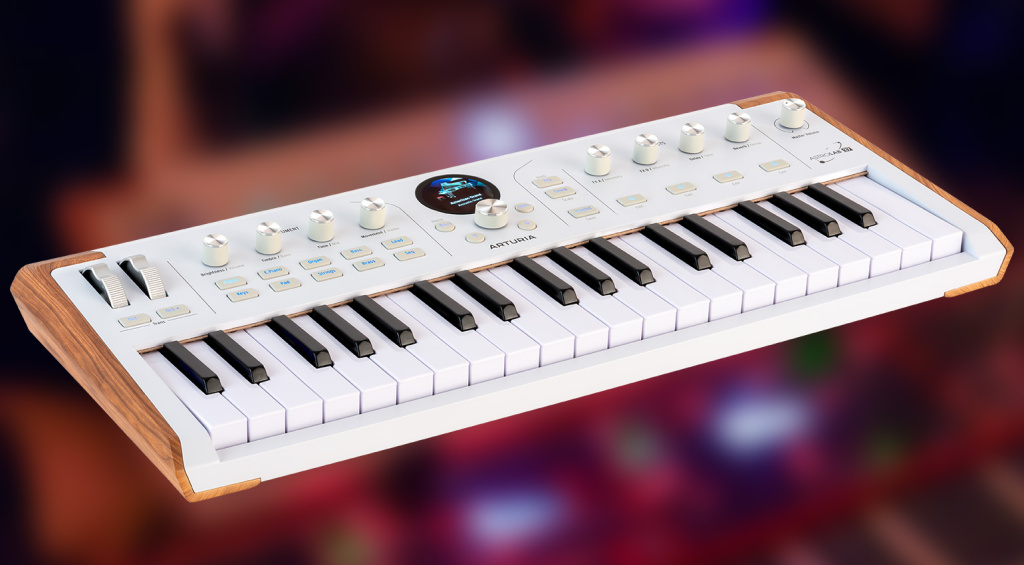
User Interface
The AstroLab 37’s user interface is almost identical in features to its two bigger siblings. As you might expect, certain elements have been moved around a bit, some have changed and a few bits are missing. The most obvious difference is the lack of the infamous and somewhat controversial multi-function display screen.
Often likened to a popular make of home thermostat controls, I actually really liked the screen and control it offered. I found it a useful way to explore and navigate my AstroLab 61. Of course, this is purely subjective, but I understand why some didn’t like it.
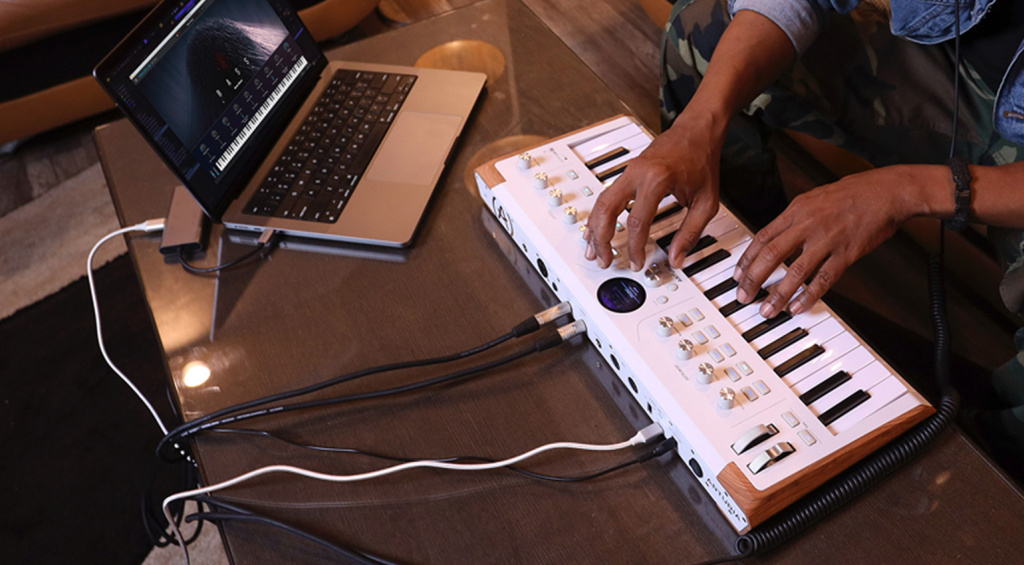
The AstroLab 37 does away with the multifunctional screen and knob combo, but retains the circular screen design. So if that was a deal breaker for you, it might well remain so. On the 37, we have a small, knurled silver knob below the screen to carry out those functions.
Other noticeable omissions include the Play and Record buttons, which means that the Looper and Sequence Recorder of the bigger versions have been culled, presumably because internally, there’s less capacity for such things.
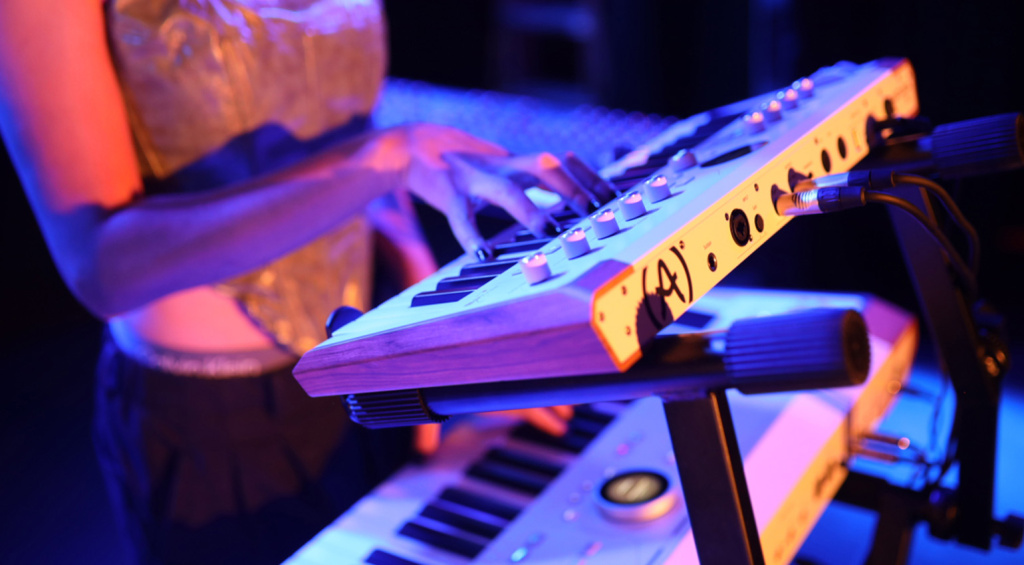
Also, the direct access Part buttons and Split button are missing in action, but you can control these features from the Analog Lab software, so all is not lost here. The AstroLab 37 is still very capable of playing splits and multis. It also retains the Chord, Scale and Arpeggio modes.
But enough about what isn’t here. The AstroLab 37 still retains the touch-sensitive knobs so that a simple light tap on the knob reveals its function and setting on the screen. So the user interface is familiar, comprehensive and completely usable.
Connectivity
But what about the back? Has it lost anything in the connectivity department? Again, just a couple of things have been trimmed away. There’s only one pedal input, for sustain, so you can leave your expression pedals at home.

One brilliant feature of the AstroLab 61/88 is the audio input combo sockets with their own gain level. The baby AstroLab has just one combo socket and gain control. But apart from that, everything else remains, including the pair of USB ports.
This means that you can still use the baby AstroLab for vocoding with the Vocoder instrument which, at this price point, along with everything else you get, is just fantastic!
Inside the AstroLab 37
At the time of going to press, I wasn’t able to confirm whether the AstroLab37 has the same, updated processor as the 88, the original processor of the 61 or something else completely different. Patch load times are quick, but that could be further firmware optimisation, as seen earlier this year on the 61.
However, now is the time for us to marvel at what is contained inside this diminutive (and did I say cute, already?) keyboard. In short, it’s a LOT! There are the 11 different sound engines that encompass Sampling, Virtual Analog, FM, Physical Modelling, Phase Distortion, Vocoder, Vector Synthesis, Harmonic, Granular, Wavetable and Karplus Strong!
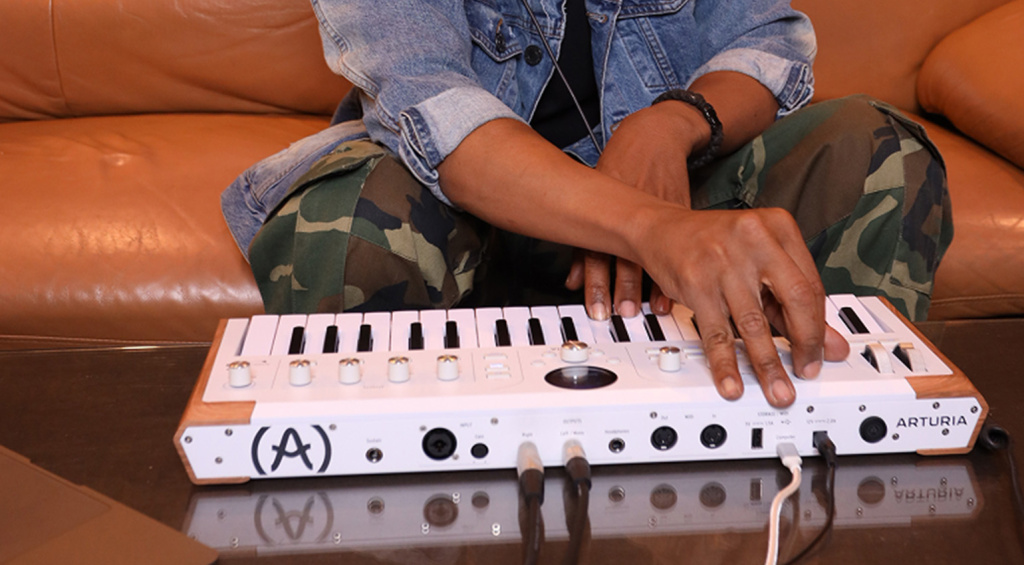
All of these synthesis types are spread across 44 instruments from Arturia’s legendary V Collection. It also includes their standout original plugin, Pigments. There’s over 1,800 presets supplied, and with the addition of other soundbanks and instruments, this little powerhouse can be expanded to 10,000 sounds.
The 37 has the exact same storage capacity as the 61, of around 23GB! This means you can load up a multitude of setlists and projects for almost every eventuality. And don’t forget the 12 insert FX! It must be like the TARDIS inside this thing!

Who is AstroLab 37 For?
AstroLab 37 rounds out the family, or at least until Arturia find another way to utilise the concept. So, who is this new model aimed at? What sets it apart from the 61 and 88? Well, portability is one thing. Sadly, the internals of the AstroLab mean that battery power isn’t really an option here. Maybe the adventurous might want to try a powerful USB powerbank, but I’m not sure how well that would work.
Even so, it is a delightfully small thing and I can see plenty of musicians taking one as a supplemental to add to their existing rig. Let’s face it, there’s a humongous number of sounds in this thing, and no need for a laptop. It would make a great second or third keyboard for many players.
Remember that advert for a brand of hair care product that had you asking, “Take two bottles into the shower??”. Well, for those who want to travel light, but travel with power, the 37 nails it. No need to cart two or three instruments around when one does them all and way more besides.
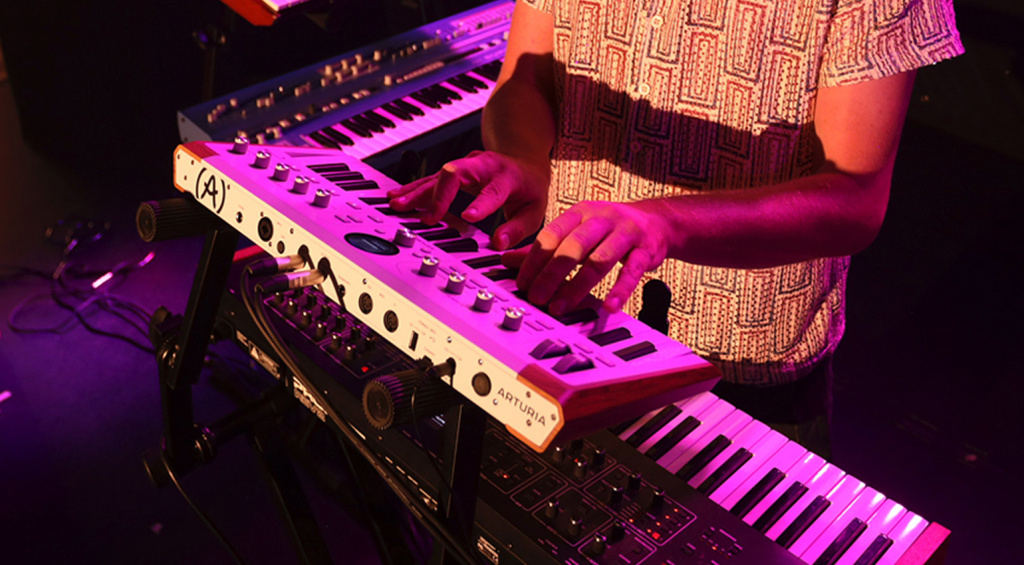
Bedroom producers will appreciate the compact form factor. Let the AstroLab do the heavy lifting without placing unnecessary strain on that ageing laptop! And for live acts, it occupies little space on stage and delivers a Geoff Downes-like collection of instruments.
Remember when every indie band had a KORG microKORG on stage, with the gooseneck mic? The AstroLab 37 is a 21st-century natural successor to that, without question.
I guess the question really ought to be, “Who is the AstroLab 37 NOT for?”, because I think that list is a lot shorter. I can genuinely see this becoming that omnipresent, cool-looking synth that we will see everywhere, be that in the studio, on stage or at home.
Frequently Asked Questions
Q: Does the AstroLab 37 have Mini Keys?
No, the AstroLab 37 has slim keys like the KeyStep’s and MiniFreak, as opposed to true mini keys.
Q: Does the AstroLab 37 work with the AstroLab Connect mobile app?
Absolutely. You can communicate with your AstroLab 37 via the Connect mobile app or through Analog Lab Pro
Q: Does the AstroLab 37 hook up to WiFi and Bluetooth like the other AstroLabs?
100%. You can even use the AstroLab 37 as a WiFi hotspot for your mobile device or laptop.
The AstroLab 37 delivers virtually all the functionality of the other AstroLabs at a superb price point and with the largest library of sounds on a single instrument that we can remember.

My Thoughts on the AstroLab 37
So when the original AstroLab 61 launched, it was met with a small amount of incredulity by some. Billed from the get-go as a stage keyboard, some people struggled to understand this and complained about the lack of in-depth synth controls, missing the point completely.
Arturia pitched the AstroLab as a powerful source of a vast array of sounds, available in a single, easy to access instrument. Those sounds came from their immense and class-leading V Collection, a suite of instruments regarded as some of the finest in the business. What’s not to love about that?
As time went on, and more people actually tried an AstroLab, more people understood the concept and liked the execution. It was, after all, the culmination of many years of planning and development. AstroLab was Arturia’s underlying focus, a raison d’etre, as the folks in Grenoble might say.

The introduction of the 88-key version made more sense to some, especially pro-players, with its excellent, weighted, hammer-action keybed. And now I think the 37 will do the same, but with the opposite end of the market.
How many other instruments pack in such a vast array of sounds, from Pigments to the JUP-8000V, the Fairlight to the Synclavier, from a physically modelled grand piano to a CS-80. There is simply nothing else that can deliver that immense sound palette at this price.
Does it lack anything? Well, I suppose the first thing people point out these days is its lack of built-in polyphonic aftertouch. ASM’s Hydrasynth Explorer could rival it in that department, and it has a kick-ass sound engine, but it doesn’t have the sheer breadth of scope that the baby AstroLab does.
AstroLab 37 delivers something big in a very small package. It is beguiling and pretty. It loses little from its bigger variants, at least nothing hugely noticeable and restrictive. And it will sell by the bucket load, mark my words.

More Information
You can get more information about the AstroLab 37 and the rest of the AstroLab range over at Arturia’s website. You can also check out other Arturia product news and review here at Gearnews by clicking on the links below.
- Arturia’s Website
- Arturia’s AstroLab Website
- Arturia’s AstroLab 37 Website
- More on Gearnews about Arturia
Price and Availability
The Arturia AstroLab 37 is available to order now for just €699.00/£625.00/$675.00.


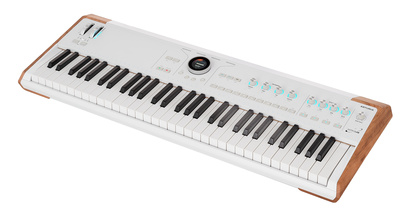

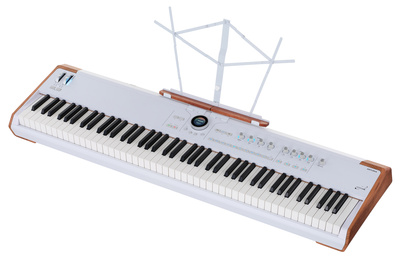



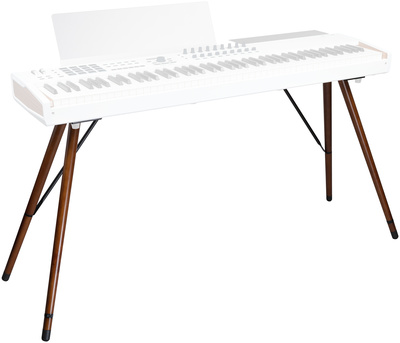

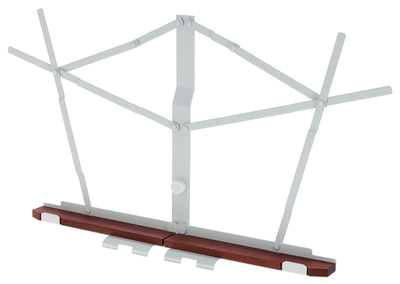
*Note: This article contains advertising links that help us pay for this site. Don’t worry: the price for you will always be the same! If you buy something through these links, we will receive a small commission. Thank you for your support!
2 responses to “Arturia AstroLab 37 – Play Big, Travel Light: Review”
 5,0 / 5,0 |
5,0 / 5,0 | 






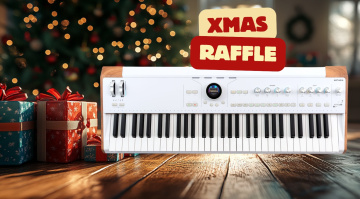


Will there be a black version, please?!
At this moment in time, we have no information regarding alternative colours of any kind being introduced in the AstroLab range. However, Arturia have a track record of doing this, so we wouldn’t be surprised if this happened somewhere down the line.